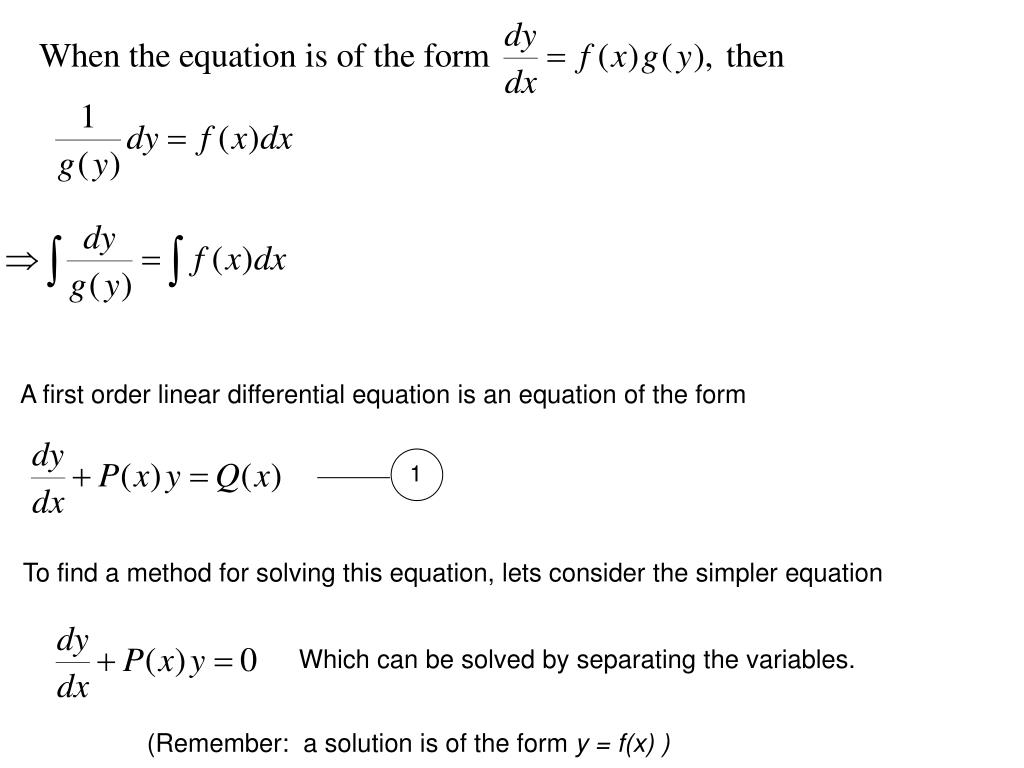
DE - Higher Order DE to First Order DE HomeYou cannot opt-out of our First Party Strictly Necessary Cookies as they are deployed in order to ensure the proper functioning of our website (such as.differential equations of first order. Using one of three different methods Euler's method, Heun's method (also known as the improved Euler method), and a. ( Image source) This program will allow you to obtain the numerical solution to the first order initial value problem: dy / dt f ( t, y ) on t0, t1 y ( t0 ) y0. Complete the table below in this.First Order Differential Equation Solver. Differential Equation - Converting Higher Order Equation to First Order Equation | ShareTechnoteDirection : Solve the general solution of the following differential equation using first order linear equation method. Solving First-order Ordinary differential equations, first order differential equation solver first order differential equation integrating factor, particular solution of first order, differential equation, second order differential equation, linear difference equation, first order nonhomogeneous differential equation, first order homogeneous differential equation, linear ordinary differential.
In many case, they just shows the final result (a bunch of first orderDifferential equation converted from high order differential equation) but not much about the process.Let's assume that we have a higher order differential equation (3rd order in this case).Our goal is to convert these higher order equation into a matrix equation as shown below which is made up of a set of first order differential equations.We will look into the process of the conversion through some examples in this section, but before going there, I want to mention a little bit about why we need this kind of conversion.Why do we want this kind of conversion ? Just to give us another type of headache ? Of course not -:)As shown in the following illustration, once we get a bunch of first order differential equations out of Higher order equation, we canI) use them more easily for numerical processing to solve the problem (See Differential Equation pages of Matlab/Octave)Ii) convert into a matrix form in which we can use a lot of linear algebra tools to analyze/solve the equationIii) (Mostly in Control System theory) convert into a state space model which can be analyzed by various tools specially designed for State Space analysis tool. This would be very important topics but I have seen almost no textbook which touches this kind of topics in detail. As far as I experienced in real field in which we use various kind of engineering softwares in stead of pen and pencil in order to handle various real life problem modeled by differential equations. They can be used on a single first - order ODE or on a coupled system of. For most nonproblematic ODEs, the solver : Converting High Order Differential Equation into First Order Simultaneous Differential EquationRunge - Kutta methods are designed to solve first - order differential equations. Some ODE’s are referred to as stiff in that the equation includes terms that can lead to rapid variation in the solution and thus produce instabilities in using numerical methods.



Do you know why I am doing this kind of conversion using many of '0' terms which does not have much meaning in mathematical sense ?It is to convert this simultaneous equations into the matrix form.Now you can easily convert this equation into a matrix form as shown below. Now let'sdefine these functions and differentials as follows.If you substitue the original equations with the variables that you defined above, you get a new equations as follows.If you combine the new equations and your definitions so that first order diffential forms are at the right side and all the remaining terms are on the right side.Now you can convert the above equations into the following format. If you extend this procedure, you can convert any number of higher order differential equations into a single matrix equation.You see two variables (more specification, two functions x(t) and y(t)) in this equations and two differential terms x'(t), y'(t).


 0 kommentar(er)
0 kommentar(er)
